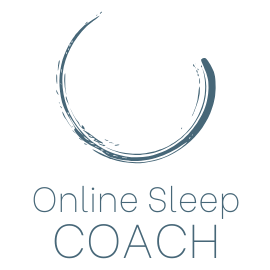Circadian rhythms play a vital role in regulating our sleep, metabolism, and overall health, yet misconceptions abound. Understanding the facts about circadian rhythms can help you make informed decisions about your daily habits and health. In this article, we’ll debunk some of the most common myths surrounding circadian rhythms and reveal the scientific truths behind them.
Myth 1: Circadian Rhythm Only Affects Sleep
Reality: While circadian rhythms are best known for regulating the sleep-wake cycle, they influence much more than just sleep. Circadian rhythms govern a wide range of physiological processes, including hormone release, digestion, body temperature, and even cognitive function. For example, cortisol levels peak in the morning to help you wake up, while melatonin production increases at night to induce sleep. Circadian rhythms also affect metabolism and immune function, showing that their impact extends far beyond just sleep.
Myth 2: Everyone Has the Same Circadian Rhythm
Reality: Circadian rhythms vary from person to person, primarily due to chronotypes. A chronotype refers to an individual’s natural inclination for sleeping and waking. Some people are early birds, feeling most alert and productive in the morning, while others are night owls, hitting their peak performance later in the day. Your chronotype is largely influenced by genetics, so while you can make lifestyle changes to adjust your sleep schedule, it’s unlikely you’ll completely change from a night owl to a morning person.
Myth 3: Circadian Rhythms Are Exactly 24 Hours Long
Reality: While circadian rhythms generally follow a 24-hour cycle, the exact length varies slightly among individuals. For most people, the natural circadian cycle is slightly longer than 24 hours, typically around 24.2 to 24.5 hours. External cues, known as zeitgebers—like light and meal timing—help adjust and reset our internal clocks daily, keeping them in sync with the 24-hour day-night cycle.
Myth 4: Artificial Light Doesn’t Affect Circadian Rhythm
Reality: Artificial light, especially blue light emitted by screens, can significantly affect your circadian rhythm. Exposure to blue light in the evening suppresses melatonin production, making it harder for you to fall asleep. This is why spending time on your phone, tablet, or computer late at night can disrupt your sleep cycle. To minimize this effect, it’s a good idea to reduce screen time in the hours before bed or use blue-light-blocking glasses or screen filters.
Myth 5: You Can Easily Reset Your Circadian Rhythm Overnight
Reality: Resetting your circadian rhythm isn’t as simple as going to bed earlier for one night. It takes time for your body to adjust to a new schedule, especially if your rhythm has been misaligned due to irregular sleep patterns, shift work, or jet lag. It can take several days or even weeks for your body’s internal clock to fully shift to a new schedule. Consistent habits—like exposure to natural light in the morning and maintaining a regular bedtime—are crucial for realigning your circadian rhythm.
Myth 6: Naps Always Disrupt Your Circadian Rhythm
Reality: Napping can sometimes interfere with your circadian rhythm, but it depends on the timing and duration of the nap. A short nap of 10–20 minutes in the early afternoon can boost alertness and cognitive function without significantly affecting your nighttime sleep. However, long naps or naps taken too late in the day can make it harder to fall asleep at night, leading to disruptions in your circadian rhythm. The key is to nap wisely—briefly and earlier in the day.
Myth 7: Jet Lag Is Unavoidable
Reality: Jet lag is a common circadian disruption caused by rapid travel across time zones, but it can be minimized with the right strategies. While you can’t avoid it entirely, you can mitigate its effects by gradually adjusting your sleep schedule before your trip, getting exposure to natural light at your destination, and staying hydrated. Using light exposure and meal timing as tools, you can help your circadian rhythm adapt more quickly to the new time zone.
Myth 8: Aging Causes Irreversible Circadian Rhythm Disruptions
Reality: It’s true that circadian rhythms can shift as we age, with many older adults experiencing earlier bedtimes and wake-up times, as well as lighter sleep. However, these changes aren’t necessarily irreversible. Maintaining good sleep hygiene, staying active, and getting regular exposure to natural light can help older adults maintain a healthier circadian rhythm. Some of these disruptions are preventable or manageable with the right lifestyle adjustments.
Myth 9: You Can’t Be Productive If You Don’t Wake Up Early
Reality: There’s a common belief that waking up early is the key to productivity, but this doesn’t hold true for everyone. Productivity is closely tied to your individual circadian rhythm, so for night owls, peak productivity may happen later in the day. Aligning your work schedule with your natural energy levels can lead to higher efficiency, regardless of when you wake up. Rather than forcing yourself into an early-morning routine, it’s better to find a rhythm that suits your chronotype.
Myth 10: Circadian Rhythm Disruptions Only Affect Sleep
Reality: While sleep is the most visibly affected by circadian disruptions, the impact extends far beyond. Circadian misalignment has been linked to a host of health issues, including metabolic disorders, obesity, cardiovascular disease, and mental health conditions like depression and anxiety. Disruptions to the internal clock can impair immune function, digestion, and hormonal balance, leading to more widespread health challenges.
Conclusion
Circadian rhythms are essential for regulating various bodily processes, but they’re often misunderstood. From myths about productivity to misconceptions about the role of light, clearing up these misunderstandings can help you make informed decisions about your daily routines. By understanding the realities of circadian rhythms, you can take proactive steps to protect and optimize your health, ensuring your body’s internal clock stays in sync with the demands of modern life.
